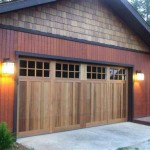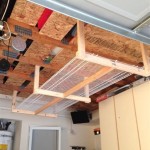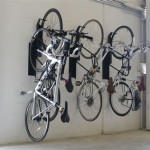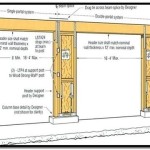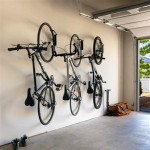```html
Creating The Ultimate Garage Modeler
The development of a garage modeler application presents a complex engineering challenge, requiring a multi-faceted approach encompassing user interface design, data management, visualization techniques, and functional programming. A successful garage modeler empowers users to visualize and customize their ideal garage space, incorporating structural elements, storage solutions, equipment, and decorative features in a user-friendly and intuitive environment. The goal is to provide a robust tool that facilitates informed decision-making during the planning and construction phases of garage projects.
The core functionality of such an application revolves around the ability to create a virtual representation of a garage, allowing users to manipulate its dimensions, add architectural features, and populate it with various objects. This process requires a sophisticated rendering engine capable of producing realistic visualizations, coupled with a data structure that efficiently stores and manages the properties of each element within the model. These elements include wall types, door and window placements, electrical outlets, lighting fixtures, and an extensive catalog of garage-specific equipment.
User Interface Considerations
The user interface (UI) is paramount to the success of a garage modeler. It should be intuitive, easy to navigate, and require minimal learning curve. A drag-and-drop interface is generally preferred, allowing users to seamlessly add and reposition objects within the virtual space. A well-designed UI should also include features such as zoom and pan controls, multiple viewing angles (top-down, isometric, perspective), and a comprehensive library of pre-built components that can be easily customized. The color palette, font selection, and overall visual aesthetic must be consistent and aesthetically pleasing, contributing to a positive user experience.
Context-sensitive help and tooltips are essential for guiding users through the application's features. These should provide clear and concise explanations of each tool's function and any relevant input parameters. Furthermore, the UI should incorporate mechanisms for error handling and validation, preventing users from entering invalid data or performing actions that could compromise the integrity of the model. For example, the application should prevent users from placing a door in a location where it would intersect with a wall or other object.
Accessibility is another crucial aspect of UI design. The application should adhere to web accessibility guidelines (WCAG) to ensure that it is usable by people with disabilities. This includes providing alternative text for images, supporting keyboard navigation, and ensuring sufficient color contrast.
Data Management and Storage
A garage modeler application generates and manages substantial amounts of data, representing the geometry, properties, and relationships of all the elements within the model. Efficient data management is essential for ensuring the application's performance and scalability. A robust data structure, such as a scene graph or an object-oriented database, is necessary for organizing and accessing this data. The choice of data structure will impact the application's ability to handle complex models with a large number of objects.
Storage options range from local file storage to cloud-based databases. Local file storage is suitable for smaller projects and offers the advantage of offline access. However, it lacks the collaboration features and scalability of cloud-based solutions. Cloud-based databases, such as those offered by Amazon AWS, Google Cloud Platform, and Microsoft Azure, provide a scalable and reliable platform for storing and managing garage models. They also facilitate collaboration by allowing multiple users to access and modify the same model simultaneously.
Data serialization is crucial for saving and loading garage models. The application should support multiple serialization formats, such as JSON, XML, or a custom binary format. JSON is a popular choice due to its human-readable format and wide support across programming languages. XML is another option, offering more advanced features such as schema validation. A custom binary format can provide better performance and compression, but it requires more development effort.
Visualization and Rendering Techniques
The visual quality of the garage model is a critical factor in its usability. The application should employ advanced rendering techniques to produce realistic and visually appealing representations of the garage space. This includes techniques such as raytracing, phong shading, and texture mapping. Raytracing simulates the behavior of light in a scene, producing highly realistic images with accurate shadows and reflections. Phong shading is a simpler and faster technique that approximates the effects of light using mathematical calculations. Texture mapping allows users to apply realistic textures to the surfaces of objects, enhancing the visual realism of the model.
The application should allow users to customize the rendering quality based on their hardware capabilities. This includes options for adjusting the level of detail, enabling or disabling various rendering effects, and choosing between different rendering algorithms. It is also important to optimize the rendering performance to ensure a smooth and responsive user experience, even on less powerful hardware.
Beyond static rendering, interactive rendering is essential. Users need to be able to rotate, zoom, and pan the camera in real-time, allowing them to explore the garage model from different perspectives. This requires a rendering engine that can efficiently update the scene based on user input. Techniques such as level of detail (LOD) can be used to improve performance by displaying simplified versions of objects when they are far away from the camera.
The integration of lighting effects is crucial to creating a realistic environment. Users should be able to place and adjust lighting fixtures, controlling their intensity, color, and direction. The application should simulate the effects of these lights on the surrounding objects, creating realistic shadows and highlights. The rendering engine should also support ambient lighting, which provides a baseline level of illumination for the entire scene.
Augmented Reality (AR) integration can further enhance the user experience. This would allow users to overlay their virtual garage model onto a real-world environment, providing a more immersive and interactive experience. For example, users could use their smartphone or tablet to visualize how a new garage would look on their property before committing to construction.
Ultimately, a successful garage modeler must combine intuitive user interface design, efficient data management, and advanced visualization techniques to empower users to create and customize their ideal garage space. The development process necessitates careful consideration of each of these aspects to deliver a tool that is both powerful and user-friendly.
```
How To Build The Hot Wheels Ultimate Garage Official Demo Hotwheels

How To Build The Ultimate Garage Diorama For Only 10 Full

How To Build A 1 24 Garage And Tools Diorama Part 2 Fujimi Model Kit

How To Build The Hot Wheels Ultimate Garage Official Demo Hotwheels

Part 3 Of My 1 24 Garage Diorama Build

Back To 1 24 Garage Diorama Build

Hot Wheels Ultimate Garage Mattel

Hot Wheels Ultimate Garage Mattel

Hot Wheels Ultimate Garage Mattel

10 Best Garage Design Free Paid For 2025 Cedreo
Related Posts


